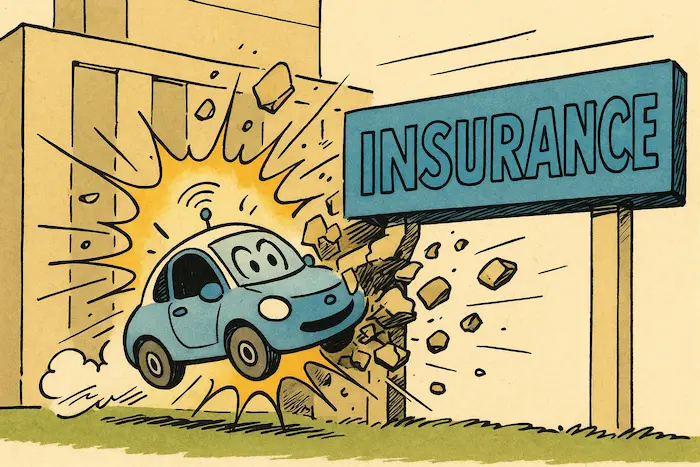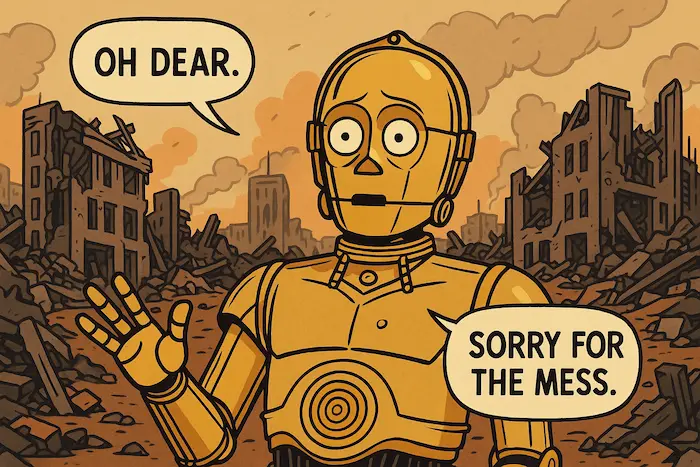When I say insurance is stuck in the 90s, I don't just mean the suit and ties or the dial-up tone of their customer service (if they even have one). I mean their core still behaves like it's written in COBOL, duct-taped to a mainframe, and lovingly maintained by the last guy who still knows how it works.
Some insurers still have floors of people operating in legacy technology that no-one ever bothered to take over.
Insurance's data obsession isn't the problem. It's the static models, siloed systems, and glacial speed that keep insurers running on ancient tech.
Been there, seen that
I worked at an insurance company in Belgium, great people, solid intentions. But when push came to shove, innovation took a backseat. The focus shifted back to "the core"? Translation: less experimentation, more spreadsheets. It's a familiar pattern in Belgium, where the industry is still tangled up in an old-school broker model that just won't die.
Now don't get me wrong, brokers can play a vital role. But the model is so entrenched, it's become a blocker for true digital transformation. You can't claim to be customer-centric while forcing people to navigate a human maze to get or update a policy.
The self-driving elephant in the room
Here's a question legacy insurers need to ask themselves: what happens to car insurance when most accidents are caused by code, not drivers? With self-driving vehicles on the rise, the traditional pricing models based on human behavior become irrelevant.
Insurers will have to rethink their role. Are they insuring the driver? The car? The software stack? The data center running the algorithms? This shift isn't a decade away. It's already happening in pockets of the world, and the companies that wait will be left watching their market vanish from under them.
Some insurance companies like Helvetia did a very good thing white-labeling their solution towards Tesla-Insurance, this gives them great intel and perhaps a headstart to what's to come.
And even if insurers do manage to catch up technologically, the bigger question is whether they'll still have a seat at the table. Will tech companies own the whole stack, including the insurance layer, or will traditional players still get a role to play at all?
Risk isn't just on the road
Until now the most underrated insurance is definitely cyber security, but let's be honest since AI took over the digital risk is skyrocketing.
Today, your biggest exposure might not be a car crash but a code injection. That's why the rise of cybersecurity tools like Aikido.dev is so important.
Platforms like these are helping companies secure their infrastructure proactively by detecting vulnerabilities before they get exploited. For insurers, that's gold: less breach risk, fewer payouts, more predictability.
Forward-thinking insurers should be jumping at these kinds of partnerships. Cyber risk is messy, evolving, and largely misunderstood by traditional actuaries. AI and platforms like Aikido.devcan fill that gap.
But how can you expect an insurer that lacks technology and innovation itself to evaluate and anticipate the risk of cybersecurity in this advancing AI world? They need help, and better now than later.
What insurers can actually do
Here's the thing: the answers are not locked away in some think tank's whitepaper. They're right in front of us. Insurers need to go direct-to-consumer. Ditch the endless paper trails and make insurance accessible online. Let people get a quote, file a claim, or update their details with just a few taps. Make it feel less like a government form and more like ordering a pizza.
Damage to your car? Imagine snapping a photo, uploading it via the app, and getting a cost estimate along with alternative repair options within minutes. That's not just possible today... it's expected.
Want to stay relevant? Play a real role in people's lives. Partner with smart car manufacturers, contribute to autonomous driving safety data, or build IoT-powered risk detection for homes and buildings. Leak sensors, fire alerts, real-time occupancy data, this kind of intelligence helps both the insurer and the insured. And with AI, integrating and analyzing that data isn't a moonshot anymore.
If insurers don't step into this role, someone else will. Everyone already has the tools. What they don't have-yet-is your market.
Exploring future value systems
There's also a big opportunity sitting right at the intersection of blockchain, IoT, and behavioral economics. Imagine an insurance model where you're rewarded in real time for reducing risk, not just with lower premiums, but with tokenized incentives.
Think Web3-based reward systems that track safe driving habits via connected car data, or smart home IoT reducing fire and water damage. These behaviors could feed into a secure blockchain ledger, generating verifiable risk profiles and dynamic premiums.
Even more, these tokens or credits could be used to pay for future coverage, access exclusive services, or be exchanged within ecosystems. It creates a flywheel where safety and accountability actually benefit the individual directly.
This is a field insurers can help shape. But only if they embrace the tech behind it.
Launch IT specialises on insurance innovation for today and the future, give us a chat if you are interested.
The fork in the road
Here's the truth: insurance is at a crossroads.
On one hand, we've got real AI-powered transformation in risk modelling, underwriting, claims, fraud detection, and customer service.
On the other hand, a lot of players are still hesitant, clinging to legacy systems, building proof-of-concepts, and dipping toes instead of diving in.
Those bold enough to build intelligent risk engines, empathetic customer tools, and explainable AI models? That's where disruption and value will come. And hopefully, fewer faxes :-).




